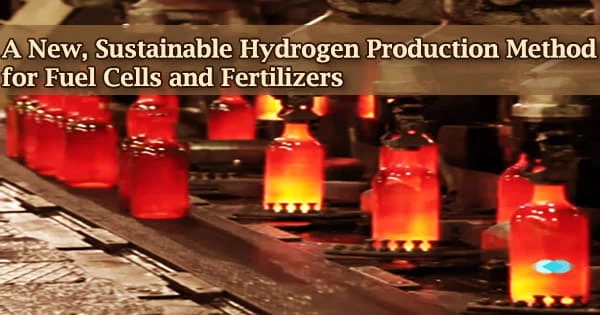A team of researchers lead by Ryuhei Nakamura at the RIKEN Center for Sustainable Resource Science (CSRS) in Japan has identified a novel sustainable and feasible method for creating hydrogen from water. Unlike current approaches, the novel technology does not necessitate the use of expensive or scarce rare metals.
Instead, cobalt and manganese, two relatively abundant metals, can now be used to make hydrogen for fuel cells and agricultural fertilizers. The research was published in the journal Nature Catalysis.
Unlike traditional fossil fuels, which emit carbon dioxide when used, hydrogen is a clean fuel that produces only water as a byproduct. The energy grid can be rendered clean, renewable, and sustainable if hydrogen can be produced from water using renewable electricity.
Furthermore, hydrogen is a major component in the production of ammonia, which is utilized in almost all synthetic fertilizers. However, instead of collecting hydrogen from water in a clean manner, ammonia plants currently rely on fossil fuels to generate the hydrogen they require.
So, why do we continue to use fossil fuels? One issue is that the process of extracting hydrogen, electrolysis, is costly and not yet sustainable.
“This is primarily due to a lack of good catalysts,” says Nakamura. “In addition to being able to withstand the harsh acidic environment, the catalyst must be very active. If not, the amount of electricity needed for the reaction to produce a given amount of hydrogen soars, and with it, so does the cost.”
Hydrogen production using a highly active and stable catalyst made from abundant metals. In the long run, we believe that this is a huge step towards creating a sustainable hydrogen economy. Like other renewable technologies such as solar cells and wind power, we expect the cost of green hydrogen technology to plummet in the near future as more advances are made.
Ailong Li
Rare metals like platinum and iridium are now the most active catalysts for water electrolysis, which poses a problem because they are expensive and deemed “endangered species” among metals. Switching the whole planet to hydrogen fuel right now would require nearly 800 years’ worth of iridium manufacturing, a quantity which might not even exist.
In the harsh acidic electrolysis environment, plentiful metals such as iron and nickel, on the other hand, are not active enough and dissolve quickly.
The researchers investigated combined cobalt and manganese oxides in their search for a superior catalyst. Cobalt oxides are capable of carrying out the needed reaction, but they corrode rapidly in an acidic environment.
Manganese oxides are more stable, although they aren’t nearly as active as magnesium oxides. The researchers sought to take use of their complementing features by mixing them. They also had to take into account the high current density required for practical use outside of the lab.
“For industrial scale hydrogen production, we needed to set our study’s target current density to about 10 to 100 times higher than what has been used in past experiments,” says co-first author Shuang Kong. “The high currents led to a number of problems such as physical decomposition of the catalyst.”
By adding manganese into the spinel lattice of Co3O4, the team was able to overcome these difficulties and create an active and stable catalyst, resulting in the mixed cobalt manganese oxide Co2MnO4.
Co2MnO4 performed exceptionally well in tests. The activation levels were comparable to those of cutting-edge iridium oxides. Furthermore, with a current density of 200 milliamperes per square centimeter, the novel catalyst lasted over two months, indicating that it could be useful in practice.
The novel electrocatalyst could be a game changer when compared to previous non-rare metal catalysts, which normally last only days or weeks at significantly lower current densities.
“We have achieved what has eluded scientists for decades,” says co-first author Ailong Li. “Hydrogen production using a highly active and stable catalyst made from abundant metals. In the long run, we believe that this is a huge step towards creating a sustainable hydrogen economy. Like other renewable technologies such as solar cells and wind power, we expect the cost of green hydrogen technology to plummet in the near future as more advances are made.”
The next stage in the lab will be to figure out how to extend the new catalyst’s lifetime and boost its activity even further.
“There is always room for improvement,” says Nakamura, “and we continue to strive for a non-rare metal catalyst that matches the performance of current iridium and platinum catalysts.”





